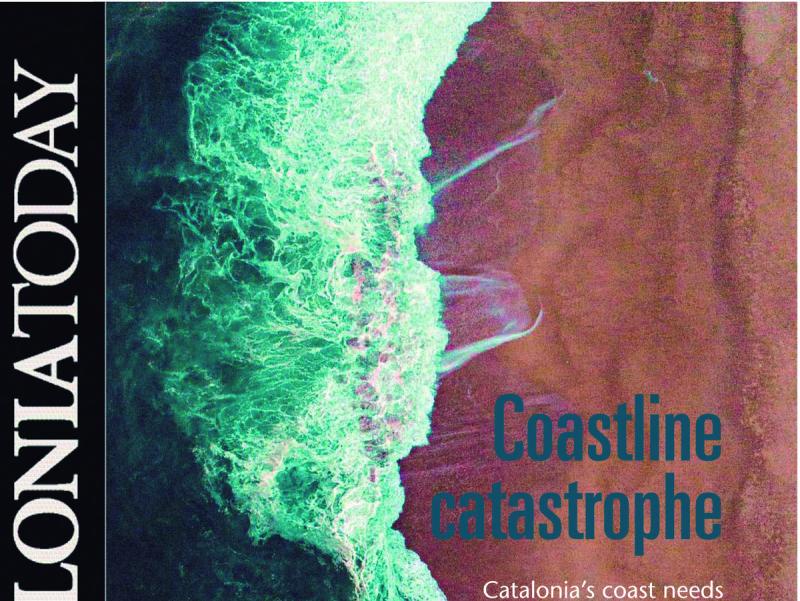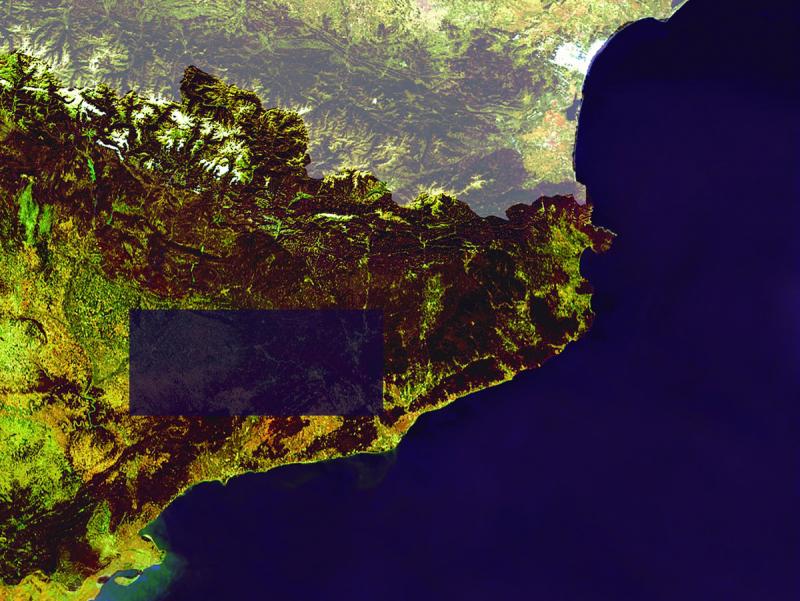If you were to prioritise one thing in the report, what would it be?
We’re losing a significant part of our beaches and our deltas because the flow of sand from rivers and streams has been cut off and also because this flow has been hampered along the coast due to structures such as ports, which break the geomorphological balance of beaches. More than half of our beaches are receding, and this will speed up due to the deficit in sediment, rising sea levels and the impact of storms. In a few decades, our beaches will be in a critical situation, not only because of their importance as natural and economic assets, but also because they are the first and often the only natural defensive barrier we have in the world to protect promenades, housing or other infrastructure, such as train lines.
What can be done?
We can only do three things. First, try to recover some of the sand and sediment that came from inland areas, and not only for the beaches but also for the management of rivers and streams, which are also degrading. Second, reduce erosion as much as possible, but not at any cost. Bringing in sand every year, apart from the costs and the environmental impact, does not solve the problem; all it does is relocate sand. Beyond the occasional contribution of extra sand, which we should try to keep to a minimum, we need to think of more comprehensive restoration solutions, including restoring dune systems, which act as storm protection, restoring beach vegetation, and trying to restore posidonia oceanica (Neptune grass) under the water, which in many cases acts as a brake on erosion. Third, it would be necessary to change the infrastructure, redesign, tweak, move or remove it depending on the case. Adaptation to climate change is local and depending on the beach’s characteristics, one action or another will be needed to reduce the impact.
It could mean demolishing a promenade or shorefront houses...
This is where we need all the options, and it will depend on the urgency, the need and the cost benefits of doing so. Doing nothing is not an option because it is inevitable, and replacing more natural beaches with breakwaters is a bad strategy. If we lose the beaches it will impact infrastructure, and letting this happen is bad business for tourism and for the well-being of the people who live in Catalonia. We must define the timeframe we have to act on the different points of the coast and decide which action is most efficient, or most suitable for each situation. Then we must execute it as a priority. Although action of all kinds is needed, perhaps we need to redesign first. That being said, there may come a point when all of this is not enough and we have to remove or demolish structures. The issue is whether to anticipate or react.
You say we have to define the timeframe. What are we looking at?
This type of analysis hasn’t been done yet and needs to be. From the data this would give us, and through an analysis by experts, the potential scenarios for sea level rise and the possible intensification of storms, we would be able to make a calculation and provide a deadline for each specific case.
But if I ask you about the Maresme train line right now, for example?
The issue of the Maresme train line should be addressed immediately. There are already serious problems and an alternative project already exists. In this case, we might say that we’re already late and no action has been taken. The longer it takes, the more problems we will have, and there are other cases that may take 20 years. In the Ebre Delta, in the Marquesa area, action must also be taken immediately because it is affected by each storm. There are areas where we already know that we need to act urgently, but also judiciously, with action that is well carried out and that minimises the impact.
Are there too many people in coastal towns?
The government’s urban moratorium is looking at this. We’ve built enough on the coast, probably too much, and some of it will have to be demolished in the future. I don’t know when, but at some point there will be a historic opportunity to demolish degraded and ugly structures and redesign them to give more space to nature and citizens, to free up spaces and reduce density.
There is also the issue of flooding.
While it will be a slow process, it is a matter of decades. However, a study has been published that talks about a huge ice sheet in the Antarctic the size of Britain that is melting faster than scientists thought. If it were to break away from the Antarctic continent in five to ten years, it could lead to a rise in sea level of 60 centimetres. Even 60 centimetres would be enough to cause us serious problems and force us to do things that we now think we can leave for twenty years. How sea levels rise due to the climate emergency will also greatly determine the pace at which we will have to act.
What about softening our shoreline?
That consists in trying to eliminate any infrastructure that does not allow the shoreline to move, whether a breakwater – which acts as a shoreline because the beach has disappeared – or linear infrastructure, such as ports, which help to protect some stretches but cause problems in others because they break the balance of sand shifting along the coast. Any removal of rigid elements and replacing them with more flexible elements, whether natural, semi-natural or combined with rigid elements that have less volume, is a move in the right direction.
Do we have too many marinas?
If the marinas were the problem, the situation would be saved. We have too much of everything: marinas, airports, main roads, industrial estates... because we signed up to the urban wave that was in vogue in previous decades, when politics was basically about inaugurating new projects. For all the towns and all the mayors to be happy, they had to have everything. This is a blatant planning mistake because there’s infrastructure that we don’t need but that exists and has to be maintained. All of this needs to be streamlined. How many ports does the Catalan coast need? Well, that’s for a group of experts to analyse and say what is ideal. Each local authority building its own port is not sustainable.
feature environment




